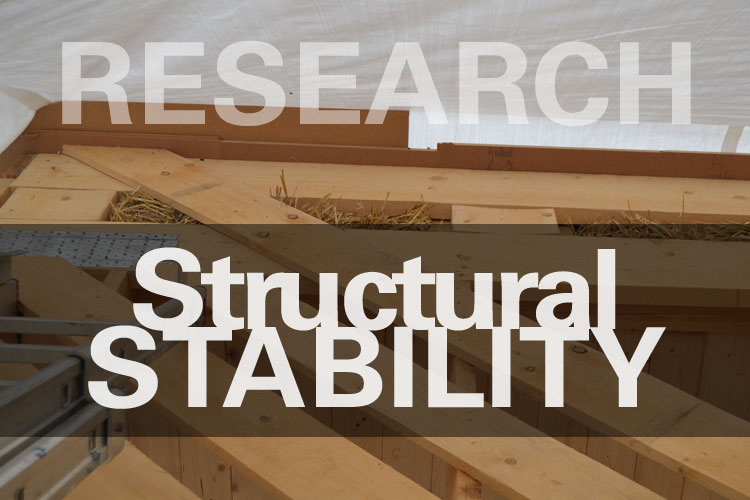The structural performance of plastered straw bales under compressive loading is extremely important when considering the suitability of plastered straw bales as a construction material. Most currently available results do not investigate how different construction methods and practices can affect the strength of a plastered bale.
The experiments discussed in this paper illustrate how the strength of the plaster, the thickness of the plaster and the orientation of the bale itself can affect the strength of the plastered bale. It was found that the bales plastered flat were 36% stronger than those plastered on edge. In addition, it was found that although the plaster strength does affect the strength of the plastered bale, it does not have as significant an impact as the plaster thickness. It was also found that nearly all plastered bales tested had higher strengths than would be required in typical residential construction. The strengths were found to be in the same range as the values reported in the existing literature. The plastered bale modulus was found to be highly variable and unpredictable.
Authors:
- Vardy, Stephen
- MacDougall, Colin
Link: http://www.journalofgreenbuilding.com/doi/abs/10.3992/jgb.1.1.63



